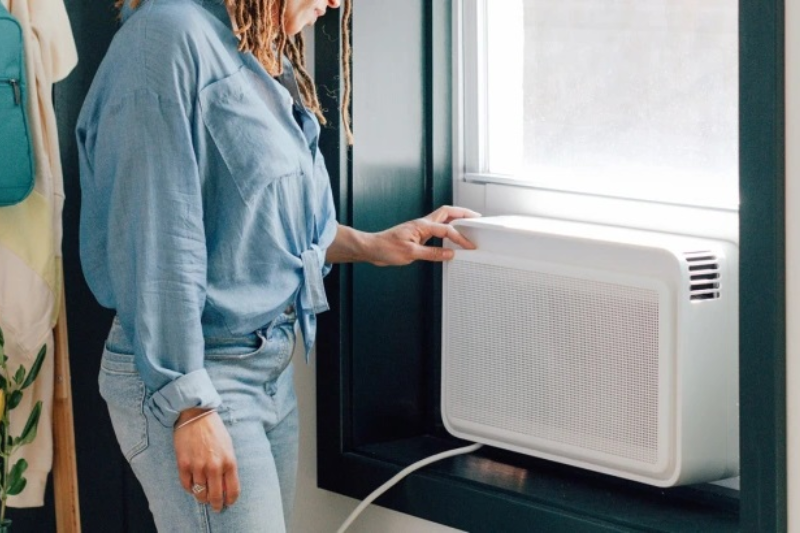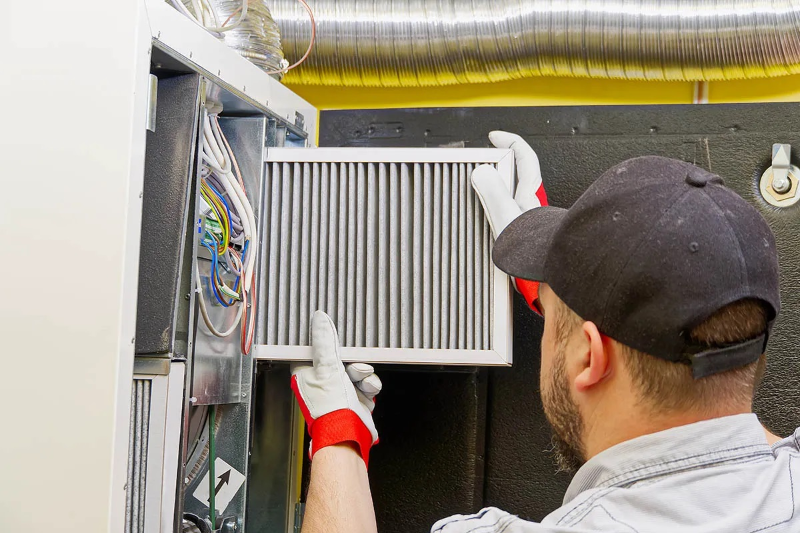Table Of Contents
In our relentless pursuit of comfort, the quality of indoor air we breathe often takes a backseat. Unfortunately, we fail to realise that the air we breathe indoors under AC can be laden with air conditioner allergies, triggering discomfort for those battling allergies.
This blog post will investigate the intricate relationship between air conditioners and allergies. We also want to emphasise the role of various systems, including ducted systems, in creating an environment conducive to respiratory well-being. Read on to learn more!
Understanding Allergies and How They Affect Us
There are different allergies in the air, and we react to them differently. You may be immune to some allergies, which may readily affect other members of your home. However, it is good that you understand the common ones since they affect almost everybody in one way or another.

Dust mites
Dust mites are minute creatures that thrive in household dust. They are a significant culprit behind indoor allergies. These minuscule arachnids feed on skin flakes and produce allergenic proteins. In homes with dust mites, you will likely find them in bedding, upholstery, and carpets, making them a constant challenge for allergy sufferers.
Mould
Mould is a type of fungus that prospers in damp and humid environments. There is indoor mould, which can cause respiratory issues and aggravate allergies. You must understand the conditions conducive to mould growth, which is crucial in managing indoor air quality.
Pet dander
Pet dander is any of several tiny, even infinitesimal, flecks of skin shed by cats, dogs, rodents, birds, and other creatures with fur or feathers. While pet ownership brings joy, you must remember that it also introduces potential allergens. Managing pet dander is essential for creating an allergy-friendly environment.
The Impact of Allergies on Individuals
When exposed to these common indoor allergens, individuals with allergies can experience various symptoms. These may include sneezing, nasal congestion, itchy or watery eyes, skin rashes, and respiratory issues. The harshness of symptoms will vary from person to person. It is, therefore, essential to identify and manage specific triggers.
The role of air conditioning in allergy management
Air conditioning systems play a rudimentary role in managing indoor allergens. While they can offer relief by filtering and cooling the air, the type of system chosen and its features can significantly impact allergy symptoms.
Choosing the Right Air Conditioning System
Knowing that different types of air conditioning systems can impact how you manage indoor allergens, you must understand the different types of air conditioning systems available.

Central air conditioning
Central air conditioning is a common type of air conditioning system for whole-house cooling. It circulates cool air through a system of supply and return ducts. It effectively maintains consistent temperatures, but the ductwork can harbour allergens if not adequately maintained.
Window units
Window air conditioners are cost-effective and straightforward to establish. However, you must understand that they are not as efficient in filtering indoor air as central systems. Understanding their limitations and implementing supplemental measures is crucial for allergy management.
Ductless mini-split systems
Ductless mini-split systems offer flexibility by allowing individualised climate control in different rooms. This is the preferred choice for many people because it eliminates the need for ductwork, reducing the risk of allergen accumulation. If you invest in models with advanced filters, you will enjoy their efficacy in relieving allergies.
Considerations for Allergy-Friendly Air Conditioning
There are considerations that you should make, especially if you are looking for allergy-friendly air conditioning systems.

HEPA filters
High-efficiency particulate Air (HEPA) filters are renowned for trapping small particles, including allergens. Choosing an air conditioner with a HEPA filter can significantly reduce indoor allergen levels.
UV-C light systems
UV-C light systems are designed to kill or neutralise mould, bacteria, and viruses. Integrating UV-C technology into your ducted system or other air conditioning units can effectively maintain clean, allergen-free air.
Energy efficiency and ventilation
Choosing energy-efficient models will not only help to reduce environmental impact but will also ensure that your air conditioning system operates optimally. Adequate ventilation is equally important in preventing the buildup of indoor pollutants.
Maintaining Your Air Conditioning System
It is always recommended that you take proactive measures towards maintaining your air conditioning system, as these will help you use it for many years.
Importance of regular maintenance
Regular upkeep is the cornerstone of an efficient and allergy-friendly air conditioning system. Ignoring the need for routine tasks can lead to reduced performance and increased allergen circulation.
Cleaning and replacing filters
Air filters trap dust, pollen, and other particles, preventing them from spreading in your living space. Engaging in regular cleaning exercises or replacing filters is crucial for maintaining optimal air quality. This will also avoid the worsening of allergy symptoms.
Professional inspections and servicing
While homeowners can perform some maintenance tasks, do keep in mind that professional inspections and servicing are essential for the longevity of your air conditioning system. With the services of trained technicians, it would be easier to identify and address issues that may go unnoticed, ensuring your system operates at peak efficiency.
Tips for Allergy-Friendly Cooling
In all cases of air conditioning, the system does not expose people to allergens. You can use your air conditioning system to work against allergies. The following are tips that can help you in this regard:

Setting the right temperature and humidity levels
Maintaining optimal indoor temperature and humidity levels is vital for allergy management. When there is too much moisture around in your home, this can promote mould growth. On the other hand, excessive dryness can irritate respiratory passages. You must find the balance to contribute to a comfortable, allergen-free environment.
Proper ventilation practices
Adequate ventilation helps remove stale air and replenish it with fresh outdoor air. You can reduce indoor pollutants by implementing proper ventilation practices, such as using exhaust fans and ensuring sufficient airflow.
Using air purifiers in conjunction with air conditioning
Air purifiers complement air conditioning systems because they can trap additional airborne particles. When you place air purifiers in strategic locations in your home, especially in areas prone to allergies buildup, this will enhance the overall effectiveness of your allergy management strategy.
Additional Strategies for Allergy Relief
The following are additional strategies to create allergy relief in your home.
Flooring choices
Your choice of hard flooring surfaces, such as hardwood or tile, will help to reduce the accumulation of allergens compared to carpets. There are many benefits in creating an allergy-friendly home when you make the right flooring choice.
Window coverings
Choosing the right window coverings can impact the presence of allergens in your living space. It is essential to understand their maintenance requirements and allergen-trapping potential, from curtains to blinds.
Common Mistakes to Avoid
There are a few mistakes you should be on the lookout for and try to avoid to prevent the buildup of allergens in your home.
Neglecting regular maintenance
Refrain from regular maintenance is a common pitfall that can compromise the AC's efficiency. The effects of neglect can be severe, and you want to endeavour to establish a maintenance routine.
Using ineffective air filters
Not all air filters are created equal. If you use subpar filters, smaller particles may circulate freely. This can worsen allergy symptoms if it happens. Understanding the various types of filters and choosing one suitable for allergy management is crucial.
Ignoring signs of mould or moisture issues
Mould thrives in damp conditions, and ignoring signs of moisture issues can lead to a full-blown infestation. Recognising and addressing these signs promptly is essential for maintaining a healthy indoor environment.
Let Professionals Guide You
Creating an allergy-friendly indoor environment requires a multifaceted approach. From selecting the right air conditioning system to implementing daily practices and vigilant maintenance, each step contributes to a healthier living space. By understanding the intricate dance between indoor air and allergies, you empower yourself to transform your home into a sanctuary for allergy sufferers.
For the best strategies to help you in air purifying and allergy management, you should get HVAC professionals to install your air conditioning system. Additionally, they are your best bet for handling troubleshooting issues with ducted systems or deciphering the nuances of your air conditioner.




